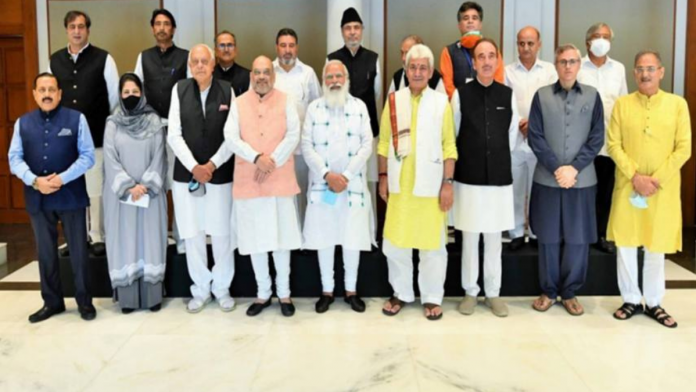Hello Readers!
In today’s blog, we will talk about the delimitation exercise in Jammu and Kashmir (J&K). We will discuss in detail about what is delimitation, when and why it is carried out and other key points related to it. So, if you want to know all about the topic read till the end of this article.
WHAT IS DELIMITATION?
The whole point of democracy is that the general public should be represented in the Parliament. But as countries are big, it is not possible to conduct elections in the entire country as a single unit. This is where delimitation comes. In this process, the total area in which polls are to be conducted is divided into smaller units. The smaller units thus formed are known as constituencies.
The boundaries of Lok Sabha and Assembly seats in a region based on recent census are redrawn.
AIM OF DELIMITATION
To have equal representation of population wise from every constituency as far as possible. To determine the number of seats (if any) which are to be reserved for the Scheduled Castes and Tribes.
To ensure appropriate division of geographical areas so that one political party does not get advantage over the other. The number of seats allocated to different states in Lok Sabha and State Legislative Assembly may also change in the process.
DELIMITATION IN JAMMU AND KASHMIR
- Earlier, before scrapping of Article 370, the delimitation of Lok Sabha seats in J&K was governed by the Constitution of India. But, the State Assembly seats were done by Jammu and Kashmir Constitution and Jammu and Kashmir Representation of the People Act, 1957. Previously in 1963, 1973 and 1995 Assembly seats in J&K were delimited.
- Therefore, a special delimitation commission was formed on 6th march, 2020 to decide the Assembly and Parliament seats in the UT. The commission was tasked to complete the delimitation in J&K in a year.
- The commission is headed by retired Supreme Court judge Ranjana Prakash Desai.Election Commissioner Sushil handra and J&K State Election Commissioner KK Sharma are the ex-officio members.
- Apart from that, the panel has five associate members – National Conference MPs Farooq Abdullah, Mohammad Akbar Lone and Hasnain Masoodi, Union Minister of State of Prime Minister’s Office Dr Jitendra Singh and Jugal Kishore Sharma of the BJP.
- The number of constituencies is expected to rise from 107 to 114. This also takes into account the 24 seats falling under Pakistan-occupied Kashmir (Pok), according to the J-K Reorganization Bill, 2019.
- The commission has been granted extension due to Covid-19 shutdown. In February, a meeting was called for the five associate members but only two attended. The Election Commission wrote to Deputy Commissioners of all 20 districts in J&K asking fresh information on population density, topography and other aspects in all the districts and Assembly constituencies.
DELIMITATION COMMISSION
Formed: 1951
Members: Retired judge of Supreme Court
Chief Election Commissioner
State Election Commissioners (of the respective states).
With this, we come to the end of this article. We covered major details related to delimitation of J&K. We also discussed delimitation in detail to help you understand it easily.
Stay tuned for more such updates!




